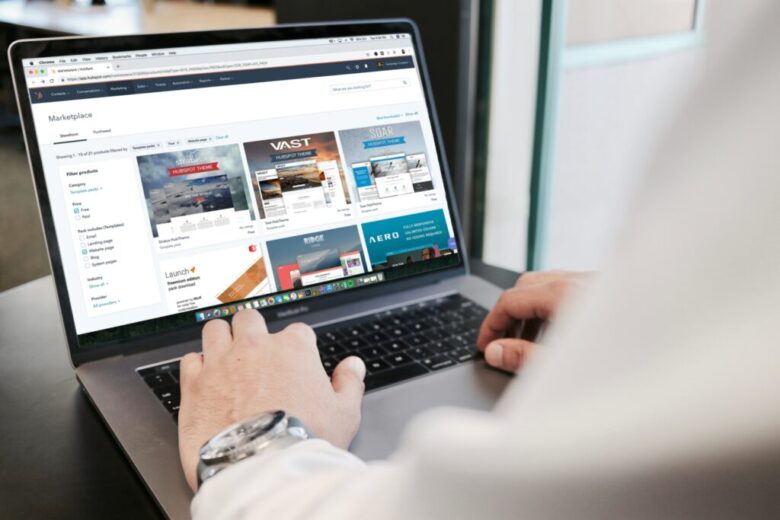Whether you’re launching a website in a new language to better cater to international markets, or a new product in a new market, localization is a vital step of your strategy. It’s a big part of creating a seamless customer experience for your users, no matter where in the world they are based.
Localizing your website involves customizing your website content, design, features, and elements to new international audiences. And it’s not just about translating languages – it’s a complex and time-consuming process that requires a lot of thorough research, specialist skill, and know-how.
Because of this fact, usually it’s best to seek help from website localization services like TransPerfect. They’ll make sure that each aspect of your website – from buttons to copy – are perfectly suited to your target market. You can put your trust in experts who know all the ins and outs – and do’s and don’ts – of executing website localization successfully.
In the meantime, we’ve got a few tips and tricks for you. It’s all about making the whole localization process as easy and straightforward as possible.
-
Conduct fastidious research

Once you’ve decided what country or region your website will be localized for, do your market research – and we’re talking in-depth, no-stone-left-unturned kind of research. The more you know beforehand about the audience you’re planning on connecting with, the fewer slips up you’ll make along the way.
When it comes to understanding your customers, it’s not just about exploring their buying habits. You’ll need to find out about their other consumer habits and behaviors and what turns them on and off. What are their values and customs? Knowing this is vital if you’re going to be able to cater the customer experience on your website.
-
Polish up your English website first

There’s a window of opportunity to do something that will set up your localization process for success too here. That’s to improve your original English website before starting the localization process. Making sure it’s pretty much perfect before adapting it to other markets will mean that what you get localized will be the best it can be.
If there are weaknesses in your site before you localize, they’ll likely be there still when the process is done. And this will only create more problems down the road. If you don’t do this, then in the future when you notice an issue with one site, you’ll need to get it fixed multiple times.
When it comes to polishing up your original site, ask yourself the following questions: Does it already meet the needs of your audience? Does it function correctly? Is the user experience positive? If it’s not right for your native audience, it won’t be for your foreign audiences either.
-
Assess your cultural correctness

One of the most important aspects of website localization is making sure your website and its content are culturally correct for the multiple audiences you serve. Attitudes and values vary just as much as languages do – which speaks to why localization is such an important part of any launch strategy.
So it’s important to remember that what might be understandable in one country might be confusing, strange, or deemed inappropriate in another. So, to successfully connect with your international markets, you must fully get your head around specific cultural norms, values, and rules, and show this off on your site.
-
Don’t forget about social media

In addition to localizing your website content (pages, products, blogs, etc.), don’t forget about your social media content too – this is especially important if your site regularly links to your social media pages. You want the user experience to be consistent across all of your reachable platforms, right? If so, you have to make sure you localize any Instagram images, Facebook posts, or YouTube videos that need customizing or adapting to certain audiences.
Depending on the size of your company, internal resources and demand in foreign markets, it is well worth considering launching regionally-specific social media accounts. These allow you to create content that speaks to your individual markets in an authentic way.
-
Start with one language first
Don’t overload the localization process with trying several languages all in one go. Start with one and nail the process first. Do it accurately and effectively before doing the same for another language/country/region. That way you will know exactly how to approach things the second, third, or fourth time around – any mistakes can be easily learned from. Plus, you might even save money by cutting out any unnecessary steps.
In addition to this, it takes time for your target audience to use your localized site, and identify any issues or challenges with it – which we’ll cover next. This is another reason why you should start off with one localized website at a time. The process of making any necessary changes is a lengthy one, so give yourself the time to get each language right.
-
Test the changes with your new audiences

As we previously mentioned, once you think you’ve got it all figured out, there’s still one step left. Before launching, be sure to test the website on your new audiences. It’s the only way to find out for sure whether it’s working well or not and make any changes before going live.
Take time to gather information about the success of your localization project – whether it’s with interviews, focus groups or surveys. Listen to the test subjects’ feedback and make any changes deemed necessary to make sure your site is perfectly localized to your target audience.
This is often the most time-consuming part of the localization process, so be patient. You can’t collect data and insights about how successful the localization process is until you give it the time it needs. And there might be a few rounds of this auditing process before your website is ready to launch – but remember that it’ll pay off in the end.
Now you’re armed with all the knowledge you need to ensure your website localization process goes as smoothly as possible, and produces the best possible results.


